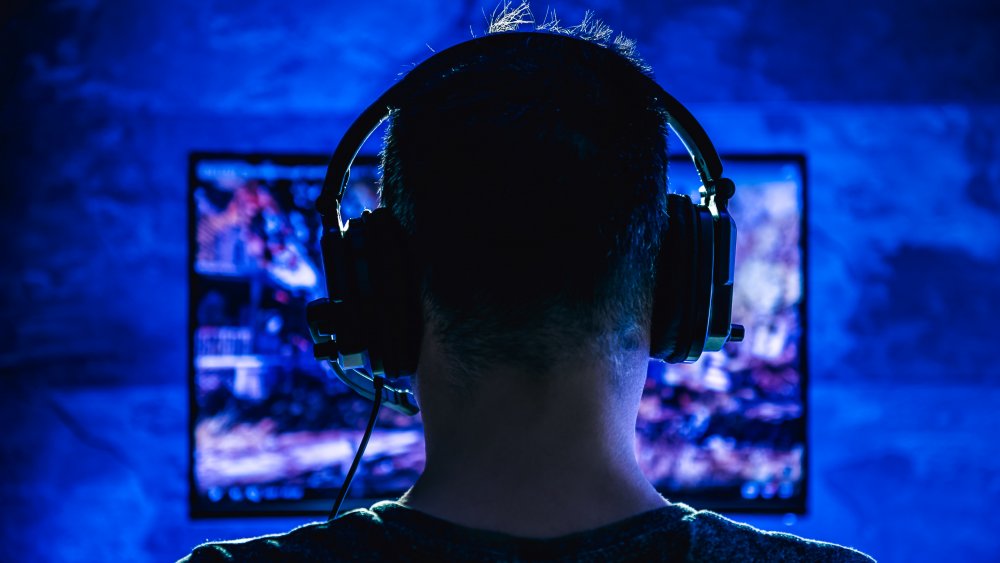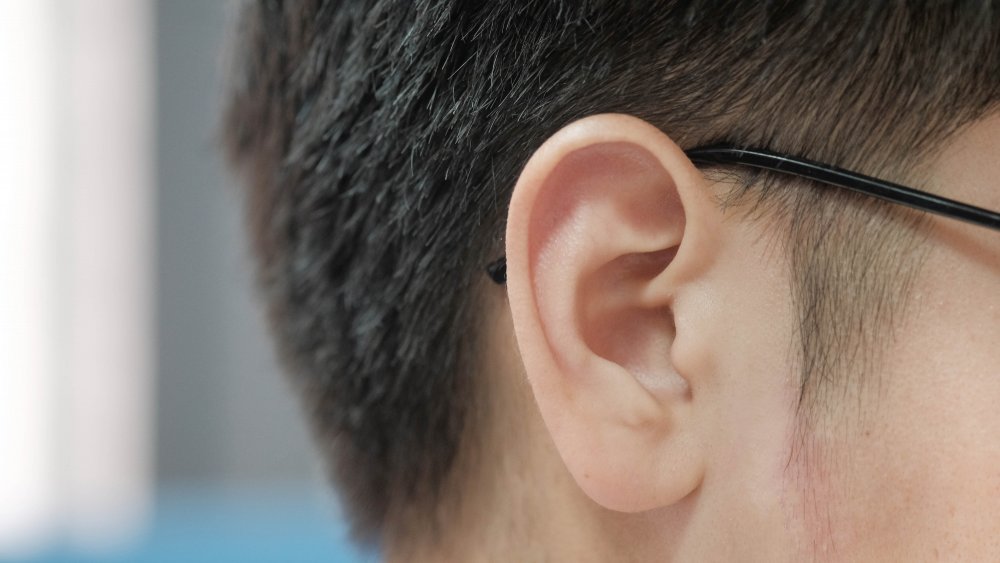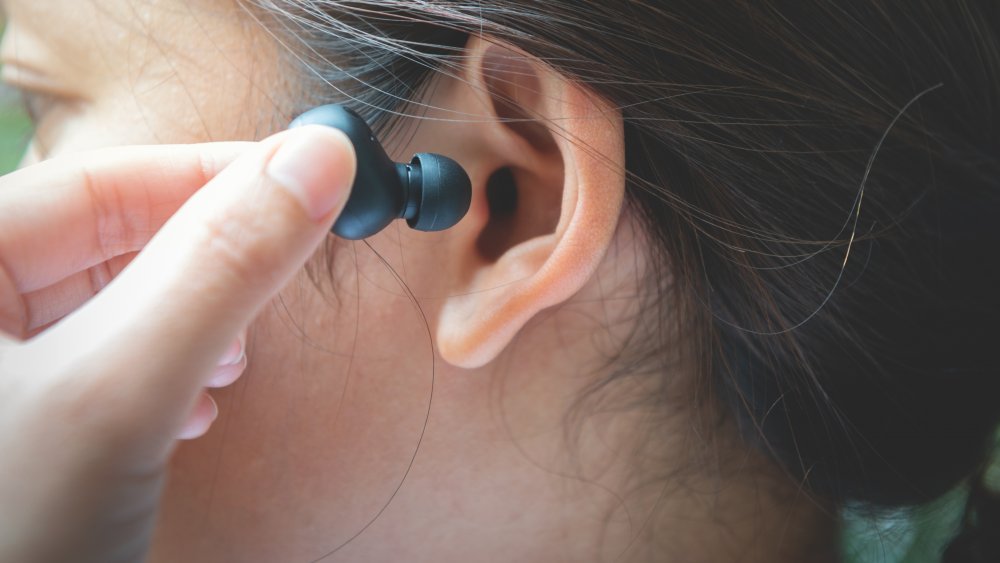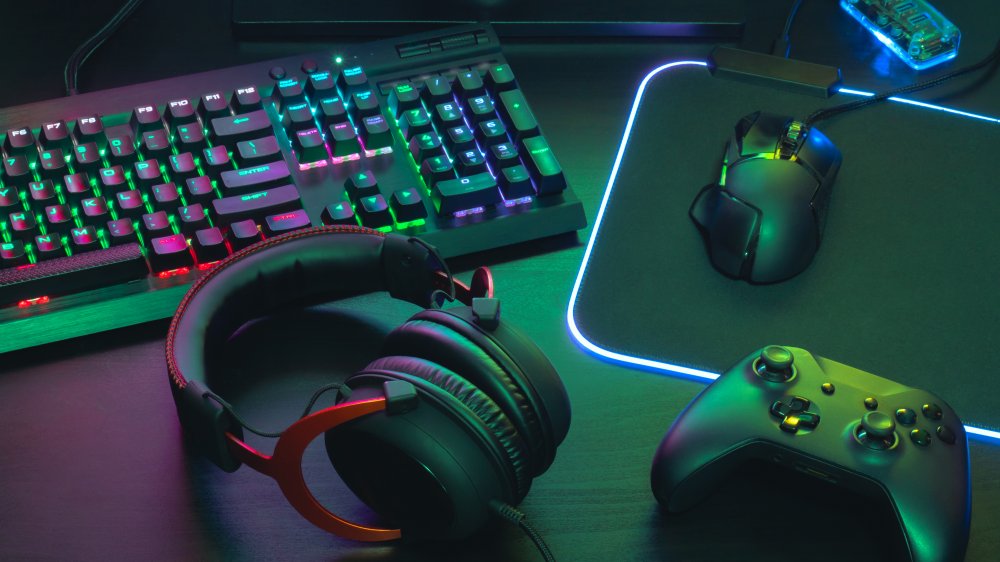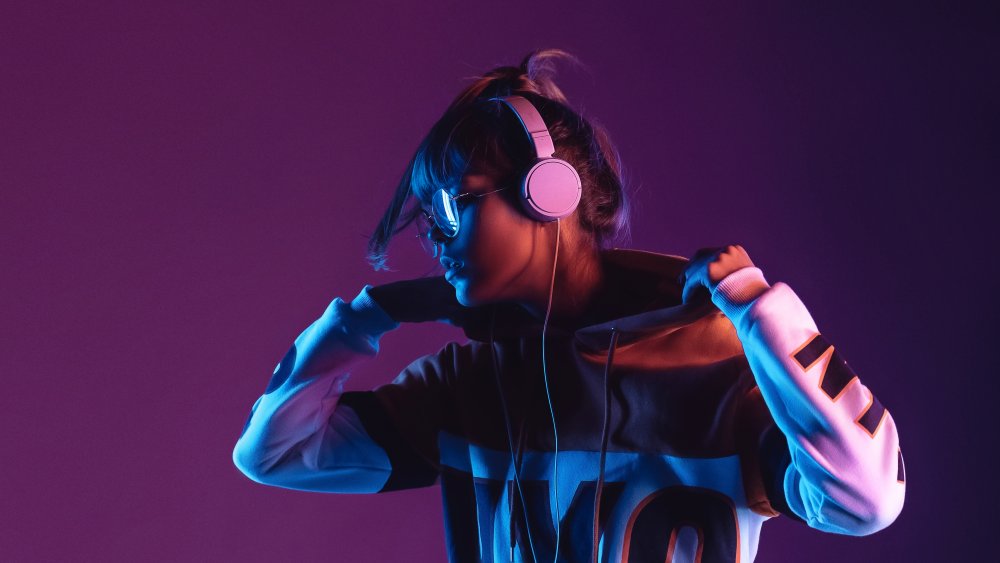When You Wear Headphones All Day, This Is What Happens To Your Body
Headphones seem to be everywhere these days — people use them constantly as they operate their electronics, whether they're on their phones, computers, gaming setups, or other devices.
These handy accessories have become a necessary part of daily life. In workplaces, headphones help employees concentrate, keeping them oblivious to outside distractions while making sure others aren't disturbed by what they're listening to. While recording podcasts, streams, and other content, headphones allow for accurate audio monitoring and editing. Plus, they keep you hands-free so you can record audio while doing something else (like playing games) at the same time. This makes them a necessity for anyone who aspires to Ninja-level fame.
Headphones provide many advantages and make life easier in this digital age. But what happens when you wear headphones so much? Is it harmful, and if so, how? What does safe headphone use actually mean?
Hearing loss has been associated with headphone use
The American Osteopathic Association reports that one in five teens will experience some hearing loss, and links this 30% increase over 20 years ago to more frequent headphone use. For kids and young adults, this can lead to developmental delays in both speech and language. But youths aren't the only demographic affected; according to the National Institute of Health, nearly one in four U.S. adults aged 20-69 show signs of noise-induced hearing loss.
Basically, the sound waves generated by headphones make the eardrum vibrate. The vibration spreads to other parts of the ear, including the cochlea and its hair cells. The hair cells initiate a chain reaction that sends an electronic signal to the brain, which registers them as sound. However, according to Dr. Santosh S, long-term exposure at high volumes makes the hair cells lose their sensitivity to vibration and may bend or fold them, which can lead to temporary or permanent hearing loss.
Studies, such as one from Swedish researchers published in the Noise Health journal in 2017, indicate that "longer lifetime exposure in years and increased listening frequency were associated with poorer hearing thresholds and more self-reported hearing problems." It also found that teenagers who listened for more than three hours at a time suffered from tinnitus.
The World Health Organization has weighed in on the risks, too, saying that people should limit their use of "personal audio devices" to less than one hour per day.
Headphones are better than earbuds
According to Dr. Maria Wynens of Atlanta HearingDoctor, earbuds are more likely to cause hearing damage than headphones, so your choice to use headphones is the smarter one.
"Since earbuds sit right inside your ear and are very close to the ear canal, they naturally increase the volume by around 9 decibels. Headphones sit outside the ear, so there is less natural amplification," she said via her blog. "Headphones also block more of the background sounds. With earbuds, distracting sounds aren't dulled, so we often reach for the volume control and turn it up to dangerous levels."
Wynens also points out that "cheaply made" earbuds can be found everywhere, and those poor-quality devices can distort sounds or play at uneven volumes, which causes listeners to compensate in ways that might harm their hearing even more.
Kathleen Campbell, an audiology expert and professor at Southern Illinois University School of Medicine, told Popular Science that headphones can be both good or bad, since noise-canceling models may encourage people to turn down the volume, but leaky versions may encourage the opposite. So, it's clear the way headphones affect your body depends on the type and quality you buy.
Headphones can cause cosmetic issues, such as acne
Headphones can cause an issue that earbuds don't — at least, not as much, just because they're smaller: skin problems, such as acne and contact dermatitis.
Dermatologist Dr. Debra Luftman told Teen Vogue, "Wearing over-the-ear headphones is a perfect setup for causing an increase of acne breakouts and skin infections. This is especially the case when you wear them during and after a workout, or if you keep them on for long periods of time. Sweat and moisture collect on and around the headphones, compressing the skin and therefore encouraging bacteria and yeast to multiply."
Additionally, additives in rubber and plastic found in headphones can cause contact dermatitis. Dr. Jonathan Silverberg from Northwestern University in Chicago told The Dermatology Times that he is seeing allergic reactions in and around the ears from headphone use. This condition appears to be relevant for earbud users, too, except earbuds are smaller so the area of contact is smaller.
How to combat the negative effects of headphones
The Centers for Disease Control and Prevention says signs of noise-induced hearing loss include: difficulty hearing high-pitched noises and conversations in noisy environments, difficulty hearing speech over the phone, difficulty distinguishing consonants, the need to turn up the volume on the television or the radio, ringing in the ears, and hypersensitivity to specific sounds.
If you are wearing headphones for more than an hour per day, you can alleviate and prevent symptoms with a few tips. First, make sure you're using good-quality noise-canceling headphones. Take breaks, cap the volume on your device, and make sure to clean the surfaces periodically and let them dry completely before using them again. A makeup-remover wipe or other anti-bacterial cloth works well. Also, listen to your body and have your hearing checked by a professional regularly.
Be alert to how many decibels you're experiencing, and take care to protect your ears in other environments, too, such as loud nightclubs. The CDC says that at a rock concert, which measures about 105-120 decibels, you can use up your daily safe level of exposure to noise in less than 30 seconds. That's not much, and you have many years of listening ahead of you.

